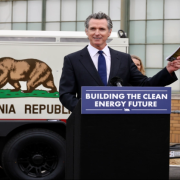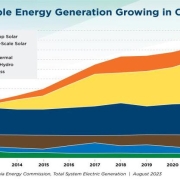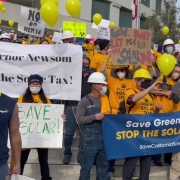California teaches Florida and Texas a lesson in ESG
Back in 2015 when California had the seventh-largest economy in the world, outperforming the rest of the US, economist Irena Asmundson attributed her native state’s trajectory to a government increasingly in harmony with the diversity of its constituents. The cost of clean energy will “continue to fall” because of the convergence of “public policy and people’s preferences,” she said amid the proliferation of solar roofs and zero emission electric vehicles from Balboa Park to Yosemite Valley. “Everyone can see the writing on the wall, that climate change is happening. These clean technologies are going to be more valued in the future.”
That’s especially true for business in the Golden State, whose gross domestic product is poised to overtake Germany’s and where the 30 publicly-traded companies deriving more than half of their revenue from alternative energy are mostly California-based. Those companies delivered a total return of 1,600% the past 10 years, exponentially greater than the 46% income plus appreciation of the world’s 58 traditional fossil-fuel firms as the cost of solar declined 80%, according to data compiled by Bloomberg. Solar is now the cheapest source of bulk electricity generation in most sunny countries, on a per-MWh basis, according to Jenny Chase, solar analyst at BloombergNEF.
Click here to read the full article
Source: The Washington Post
—
If you have any questions or thoughts about the topic, feel free to contact us here or leave a comment below.










Leave a Reply
Want to join the discussion?Feel free to contribute!